JTEKT Shapes the Future of “Steering” in the Evolving World of Autonomous Driving
“Redundant Design” to Create a Fail-free System
“Our mission is to create a ‘steering system that will never stop’. That is, a system that will continue to function no matter what happens. This is a critically important point for us” says Mr. Hiroaki Kaji, of JTEKT Corporation, the world’s top manufacturer of steering systems for automobiles. JTEKT’s global share far exceeds its competitors ranking second and below at approximately 26% and the company is also known to have been the first to develop and mass-produce electric power steering (EPS) systems in 1988. Along with its bearings, machine tools and driveline components business, JTEKT’s sales for 2016 exceeded 1,300 billion yen.
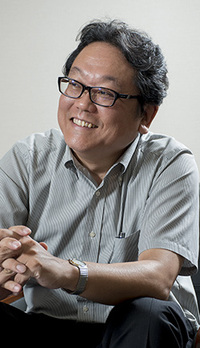
General Manager
Electric System Planning Department
Steering Systems Business Headquarters
JTEKT Corporation
Mr. Kaji, heading electronic systems development in the Steering System Business Headquater, explains how “In autonomous driving, the highest level of security where the steering functionality continues even if a problem occurs in a different area, is crucial”.
He further explains that “One options is to stop the system to secure safety, and this used to be the norm. However, with the wide adoption of EPS and automobiles basically being developed using EPS, there are now circumstances where it is difficult to smoothly maneuver the steering wheel by the human driver’s power alone. And when it comes to autonomous driving, the steering function can absolutely never fail. Needless to say, failure of the steering function would lead to a severe accident”.
Then what can be done to create a “fail-free” steering system? The answer is “redundancy”, which means having a duplicated system. Even if one system fails, the other system can provide backup and the car will continue to drive.
“The first stage was to secure safety by redundant design of software. We then went on to doubling some of the hardware such as sensors as the next stage. In the future, we want to duplicate key components such as microcomputers and electric power sources. The key on the technical side is to secure independence of each system while enabling them to coordinate at the same time. Both systems need to coordinate to understand what is happening to the automobile, while in the face of a failure on either side, they need to be able to function independently. How to balance these two is where our engineering excellence comes in”. (Mr. Kaji).
Switching between Automatic Steering and Manual Steering Also a Key Challenge
Another area in autonomous driving that JTEKT is zealously working on evolving is the switching of control between the human driver and the vehicle, including from automated steering to manual steering and vice versa.
Mr. Yasuyuki Yoshii of JTEKT points out that “The speed at which autonomous driving cars penetrate the market is dependent on the perfection of this Human Machine Interface (HMI)”. Mr. Yoshii is in charge of developing technologies needed for the future as General Manager of Research & Development Headquaters Systems Innovation R&D Department. He is now working on the development of technology such as “hands-on detection” and “shared control” to be used for autonomous driving
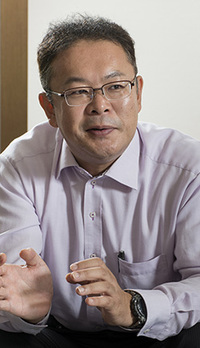
General Manager
Systems Innovation R&D Department
Research & Development Headquaters
JTEKT Corporation
“For example, how smoothly can we make cars switch from automated steering to manual steering when the driver grips onto the steering wheel to maneuver the car? Or how can we stop automated steering from switching to manual steering when the driver mistakenly touches the steering wheel? These are matters that directly link to safety. So we are working on enabling speedy and accurate switching using the highly reliable EPS sensor technology we have developed over the years. Further, we are also applying a unique algorithm so that vibrations coming from the ground aren’t detected in order to create a worry-free steering experience for drivers, which we feel is very important. By all means, supporting all this is the vast amount of knowledge we have accumulated in the long history of our steering system business”. (Mr. Yoshii)
JTEKT is also looking into the integration of steering technology with information displays and audio devices. Taking such a comprehensive approach is based on JTEKT’s belief that “steering has the most interaction with the human driver when the driver maneuvers the car”.
“Each automobile manufacturer takes a different approach toward autonomous driving. While we cater to each of those diverse needs, we, as the leading manufacturer, have the responsibility to perfect a system that captures generic needs and trends. In order to do so, we always work strictly in a logical order based on logic starting from generic concepts. I always want to make sure I continue to work according to this basic concept” says Mr. Kaji from the Electric System Planning Department.
On the other hand, Mr. Yoshii from the Systems Innovation R&D Department emphasizes that “As the steering’s leading company, we need to continue to create and communicate new visions”.
“We want to enable seamless inter-switching between automated and manual steering and we also want to offer autonomous driving that continues to bring the joy of driving to the five senses to drivers. Further, we need to look into what is required of steering as a HMI when looking at automobiles as a comfortable space for transportation or in view of the fact that automobiles are increasingly being used as shared cars. To pursue such areas is going to be critical for JTEKT’s success into the future”. (Mr. Yoshii)
JTEKT is also working on the research and development of “Steer by Wire”, where the steering wheel and tires are connected by electric signals and not by mechanical structures. There is no doubt that the development areas in which Mr. Kaji and Mr. Yoshii are working on will be playing a larger role in the coming years. And when looking further ahead, when steering will be connected with IT, how JTEKT steers its business is going to have a large impact on the automobile industry.
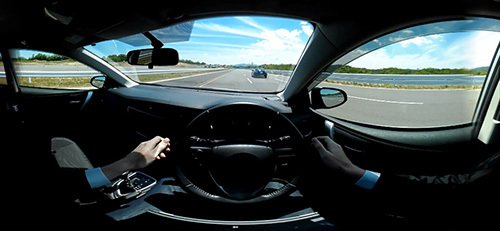
Come and meet the “Mobility of the Future” at Tokyo Motor Show 2017 and JTEKT ROOM Ginza
JTEKT will be participating in the 45th Tokyo Motor Show 2017 at Tokyo Big Sight from October 27th to November 5th. A satellite exhibition will also take place from October 18th to November 24th at JTEKT ROOM Ginza.
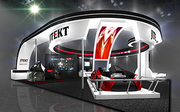
JTEKT will be participating in the 45th Tokyo Motor Show 2017 at Tokyo Big Sight from October 27th to November 5th. A satellite exhibition will also take place from October 18th to November 24th at JTEKT ROOM Ginza.
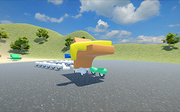
For the JTEKT ROOM Ginza satellite exhibition, a design team from Tama Art University has created an experiential video envisioning JTEKT’s “technology to turn” in the world of mobility fifty years from now that guests can maneuver themselves.